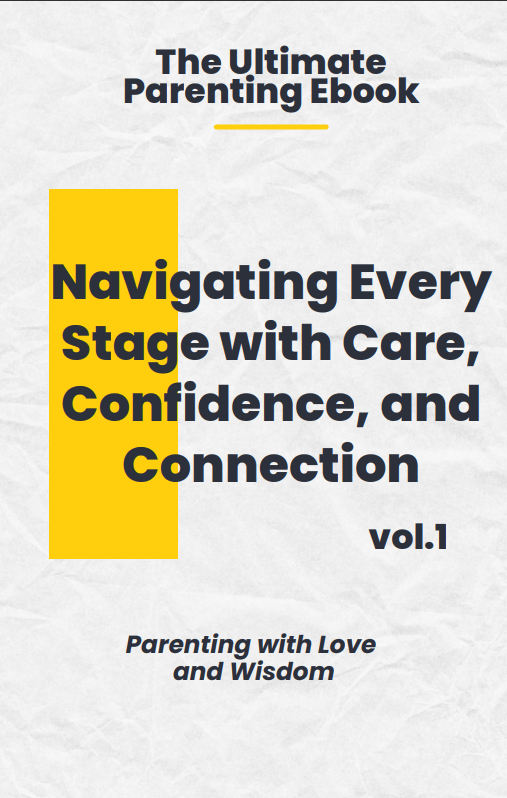Boost your child’s well-being in 2024 with these home education tips. Learn how to create a balanced and nurturing learning environment at home.

Home education is not just an academic choice; it’s a lifestyle that intertwines learning with the emotional fibers of family life. In the United States, where home education is a growing trend, parents are increasingly aware of the emotional nuances that come with this territory. It’s a journey that requires a deep understanding of one’s children, far beyond their academic needs.
The emotional challenges in home education are unique. Parents must wear multiple hats, acting as educators, mentors, and emotional anchors. This multifaceted role demands a high level of emotional intelligence, a skill that is paramount in creating a supportive and thriving home education environment.
It fosters an atmosphere where children feel understood and supported, allowing them to engage with the curriculum in a meaningful way. By recognizing and addressing the emotional aspects of home education, parents can unlock a more holistic and enriching educational experience for their children.
In this blog post, we will delve into seven strategic tips to harmonize the academic and emotional spheres of home education. These insights are designed to empower parents to cultivate a nurturing environment that fosters intellectual growth and emotional stability. With these strategies, parents can confidently guide their children toward a future where learning is not just an academic exercise, but a joyful and fulfilling journey.
In This Blog
ToggleTip 1 – Establish Emotional Check-Ins

In the realm of home education, emotional check-ins serve as a pivotal tool for nurturing a supportive learning atmosphere. These check-ins are vital touchpoints that allow both students and parents to express and manage their feelings, ensuring that the home remains not just a place of academic learning but also emotional growth. You need to do :
- Start with a Schedule: Set aside a regular time each day or week for check-ins, making them a predictable part of your home education routine.
- Create a Safe Space: Ensure that the environment is comfortable and free from distractions, where open communication is encouraged.
- Use Engaging Prompts: Begin with questions like, “What was a highlight and a challenge today?” to spark conversation.
- Active Listening: Show empathy and give undivided attention to your child’s responses, validating their feelings.
- Mutual Sharing: Encourage a two-way dialogue where parents also share, fostering mutual understanding.
- Follow-Up Actions: Decide on steps to address any concerns raised, demonstrating that emotional check-ins lead to positive change.
Tip 2 – Integrate Mindfulness Into The Curriculum
In the journey of home education, mindfulness is the compass that guides both focus and emotional well-being. It’s a practice that, when integrated into the curriculum, can transform the learning experience from the inside out. Because:
- Cultivating Concentration: Mindfulness exercises can improve attention spans, allowing students to engage deeply with their studies.
- Regulating Emotions: Regular mindfulness practice helps students manage stress and anxiety, contributing to a more peaceful home education environment.
- Encouraging Presence: Being mindful teaches students to be present in the moment, an essential skill for absorbing new information.
Practical Ways to Integrate Mindfulness
- Start with Breathing: Begin each lesson with a minute of focused breathing to center the mind.
- Mindful Breaks: Incorporate short, mindful breaks between subjects to reset and refresh.
- Nature Walks: Use the natural world as a classroom, where mindful observation can enhance science and art lessons.
- Gratitude Journaling: End the day with reflections on what was learned and moments of gratitude.
Tip 3 – Create a Supportive Learning Environment

The environment in which we learn can significantly influence our ability to absorb and retain information. Here’s how you can transform your home into an enriching learning sanctuary:
- Dedicate a Learning Zone: Establish a specific area in your home that is solely for educational activities. This helps in associating the space with focus and learning.
- Incorporate Natural Elements: Studies show that natural light and plants can improve mood and concentration. Consider placing desks near windows and adding some greenery.
- Comfort Matters: Ensure that furniture is comfortable and ergonomically supportive to facilitate longer periods of concentration.
- Involve Your Child in Design: Encourage your child to contribute ideas for the study area’s decoration. Their individual flair can transform the space into a welcoming and secure haven, enriching the overall home education journey.
- Organize for Success: Keep the learning area tidy and organized with all necessary materials at hand to minimize distractions and maximize efficiency.
Tip 4 – Encourage Social Interaction With Home Education
One of the myths surrounding home education is the notion of isolation, but with intentional planning, parents can cultivate a vibrant social network for their family. Here’s how to ensure your home education journey is rich with community connections:
- Community Learning Collectives: Consider becoming part of or initiating a local home education collective. Such groups provide invaluable opportunities for collaborative learning and interactive experiences.
- Online Forums and Groups: Engage with online communities. They offer a wealth of resources and support for home-education families.
- Educational Workshops: Enroll in workshops or classes offered by museums, libraries, or educational centers that encourage social interaction.
- Volunteering: Involve your family in community service. It teaches social responsibility and empathy, key values in home education.
Tip 5 – Balance Structure with Flexibility
In-home education, striking the right balance between a structured curriculum and the flexibility to adapt to a child’s emotional needs is crucial. This equilibrium allows for a personalized learning experience that can lead to greater emotional health and academic success.

Adapting Educational Plans for Emotional Support
- Flexible Scheduling: Allow for changes in the daily routine to accommodate a child’s emotional state, such as starting later or taking more frequent breaks on challenging days.
- Choice in Learning: Empower students by letting them choose which subjects or activities they want to tackle first, giving them a sense of control and ownership over their learning.
- Emotional Literacy: Incorporate lessons on emotional literacy into the curriculum, teaching children to identify, express, and manage their feelings effectively.
- Project-Based Learning: Engage in projects that align with a child’s interests and passions, which can boost motivation and reduce stress.
- Responsive Adjustments: Be prepared to modify lesson plans if a child is experiencing emotional difficulties, focusing on well-being over rigid adherence to the schedule.
Tip 6 – Recognize Achievements and Setting Realistic Goals
In the world of home education, recognizing achievements is not just about celebrating success; it’s about nurturing the emotional well-being and academic motivation of our children. When parents acknowledge their child’s efforts and milestones, it reinforces their sense of accomplishment and encourages them to set new goals.
- Start Small: Begin with attainable objectives that align with your child’s abilities and interests.
- Celebrate Progress: Recognize and celebrate each step forward to boost confidence and motivation.
- Realistic Expectations: Set goals that are challenging yet realistic to avoid unnecessary stress.
- Reflect on Outcomes: Take time to reflect on what was learned from both successes and setbacks.
Tip 7 – Prioritize Self-Care for Educators
In the home education landscape, self-care is the cornerstone that supports the entire educational structure. It’s the practice that allows parents and educators to maintain their emotional balance, ensuring they can provide the best possible learning experience.
Strategies for Self-Care in Home Education
- Drawing the Line: It’s crucial to delineate personal time from teaching duties. Consider scheduling distinct periods for educational activities and leisure to avoid the pitfalls of burnout.
- Active Living: Make movement a non-negotiable part of your day. Regular physical activity is beneficial not just for physical health but also for mental well-being and alleviating stress.
- Mindful Moments: Practice mindfulness or meditation to stay grounded and focused, which is essential in a home education setting.
- Connect with Peers: Engage with other home education parents or educators. Sharing experiences can provide support and new perspectives.
- Pursue Passions: Make time for hobbies and interests outside of home education. This helps in maintaining a sense of self and personal fulfillment.
Conclusion
The journey of home education is enriched when we intertwine academic pursuits with emotional well-being. Recognizing that the heart and mind are allies in education, we see that nurturing one nurtures the other. As parents, when we prioritize emotional health, we lay a foundation for academic success that is robust and enduring.
I encourage you to weave these tips into your home education practice. By doing so, you’re not just educating; you’re empowering your children with the resilience to thrive in all areas of life. Share your experiences below—what strategies have you found most effective in supporting your child’s emotional and academic growth?
You may also be interested in : Homeschool Hours by Age Chart: How Many Hours Should Your Child Study?
FAQs
1. What are the key benefits of home education?
Home education offers personalized learning, flexible schedules, and a safe environment. It allows parents to tailor the curriculum to their child’s needs, promoting balanced well-being.
2. How can parents ensure a balanced curriculum in home education?
Parents can use a mix of academic subjects, physical activities, creative arts, and life skills to create a well-rounded curriculum that supports overall growth and well-being.
3. What are some tips for maintaining discipline in home education?
Establish a consistent routine, set clear expectations, and use positive reinforcement. Involving children in rule-making can also foster cooperation and respect.
4. How can parents keep children motivated in a home education setting?
Incorporate diverse learning activities, set achievable goals, and celebrate milestones. Personalizing lessons to align with a child’s interests can also enhance motivation.
5. What resources are essential for effective home education?
Essential resources include a reliable curriculum, educational materials, online tools, and a dedicated learning space. Support networks and community resources can also be beneficial.
6. How can parents balance educational and recreational activities?
Schedule regular breaks, incorporate fun learning methods, and ensure a mix of indoor and outdoor activities. Balancing academics with hobbies and physical exercise is crucial.
7. What are some strategies for socialization in home education?
Join local homeschooling groups, participate in community activities, and arrange playdates. Online forums and extracurricular classes can also provide social interaction opportunities.
8. How can parents assess their child’s progress in home education?
Use regular quizzes, assignments, and projects. Keep a portfolio of your child’s work and seek feedback from educational professionals if needed.
9. What should parents consider when starting home education?
Research state laws, choose an appropriate curriculum, and set realistic goals. Planning a structured schedule and creating a conducive learning environment are also important.
10. How can technology enhance home education?
Use educational apps, online courses, and interactive tools to make learning engaging. Virtual field trips and online libraries can also provide valuable resources.




